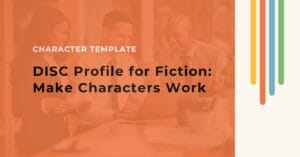
Organize your creativity with the #1 book outlining and story bible software for professional and aspiring writers.
Product
Helpful Links
© Fictional Devices, 2024. All Rights Reserved.
Each of us has a fully rounded and unique personality. It’s what determines our traits, quirks, sense of humor, and how we react to challenges. But when it comes to creating characters, imbuing them with complexity is easier said than done.
That’s where the Big Five Personality Traits, also known as the Five-Factor Model (FFM), comes in. A widely accepted framework for describing and evaluating personality traits, it’s a bit more open-ended than other models that provide distinct personality “types,” such as Myers-Briggs, and many psychologists prefer it for this reason. As it happens, so do many writers.
In this article, you’ll learn how to use the Big 5 Personality Traits to develop fictional characters who feel every bit as real and believable as their living and breathing counterparts.
The Big 5 Personality Traits Character Template is based on the popular theory held by many psychologists, which emerged in the 1960’s and 70’s, that the differences in people’s personalities can be broken into five major traits:
If you’re curious to see where you fall on the scales, or just want to take a deeper dive into the human psyche, take a free Big 5 test here.
Writers are always admonished to “show don’t tell.” We show readers complex and well-rounded characters — without expressly mentioning the traits and attributes they possess — by creating scenes that allow readers to get to know our characters through their words and actions.
Paying close attention to core personality traits can help guide youin this endeavor. Here are five ways you can use the Big Five Personality Traits to develop compelling characters:
While these tips are relevant in all genres, they’re absolutely essential when writing character-driven stories (e.g. imagine a mystery series with a particularly idiosyncratic lead detective).
How do the Big 5 traits fit into Plottr? Well, the software comes with an easy-to-use character template, along with a series of prompts, to help you fill in the details of your characters based on this personality test.
Let’s take a look at the template before we consider a few examples from popular literature:
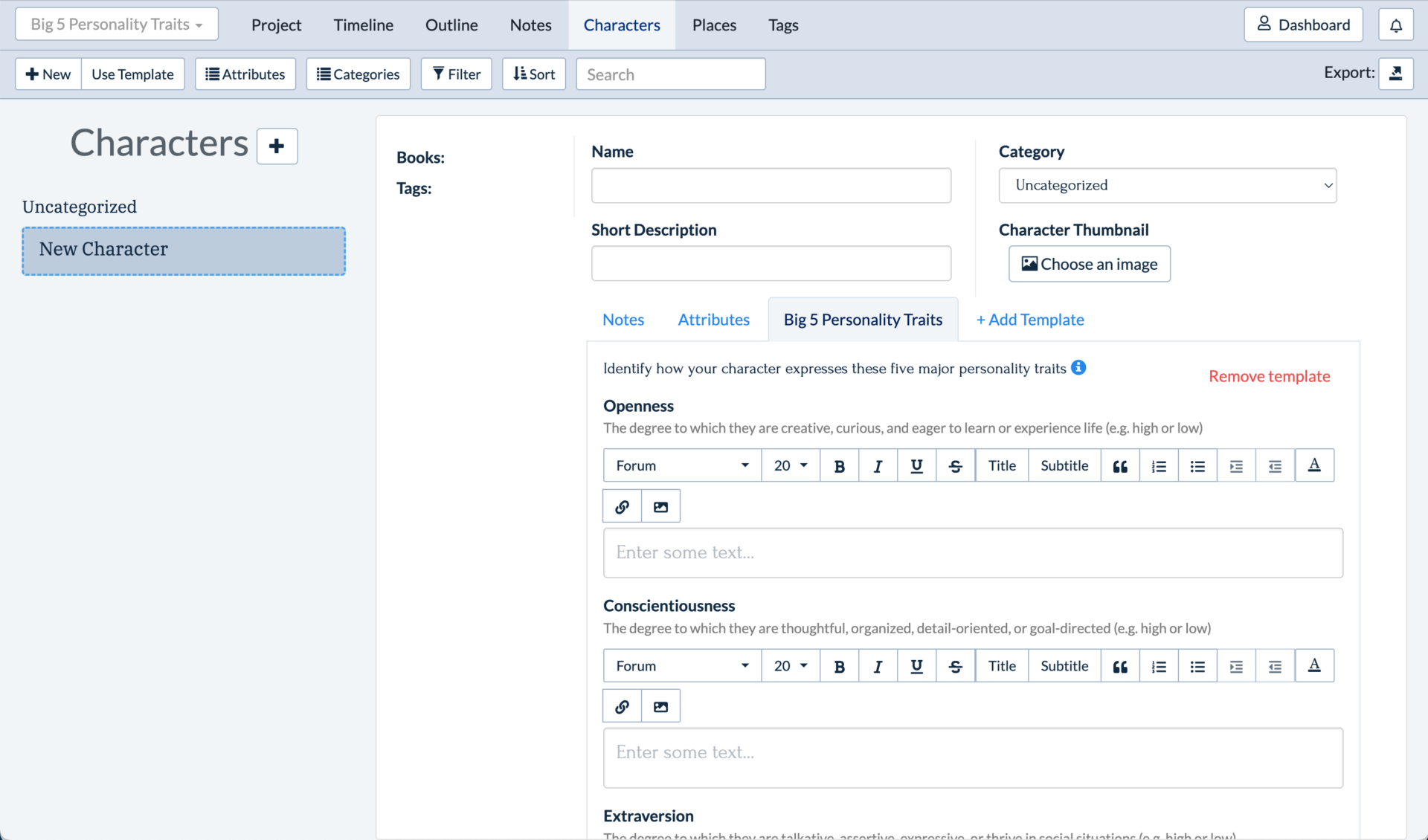
Using this framework, you can easily enter details about your characters into Plottr to track how they manifest these traits within your books and series.
No matter which genre you write, the Big 5 Personality Trait Character Template provides a useful framework for developing characters with the necessary attributes, quirks, and strengths (or weaknesses) to fit your story.
If you’re penning a thriller, you may want a hero similar to Lee Child’s famous Jack Reacher — a smart, brazen, invincible, and highly conscientious lead character. Or maybe your quiet, literary novel calls for a heroine like Elena Gilbert from The Vampire Diaries — a gentle, highly agreeable introvert who really has no idea how much inner strength she possesses until she’s forced to act.
Here are a few examples of memorable characters across the spectrum of the Big Five:
Just remember: no matter the trait, your characters will come across as far more authentic and credible if your readers see them demonstrate that behavior in a multitude of ways throughout the story (and not just by having you say that’s how they are).
If you’re ready to get started using the Big 5 Personality Traits Character Template, first you’ll need to purchase Plottr or sign up for a free trial.
Once you have Plottr set up on your computer, follow these five steps to add the Big 5 Template to your character:
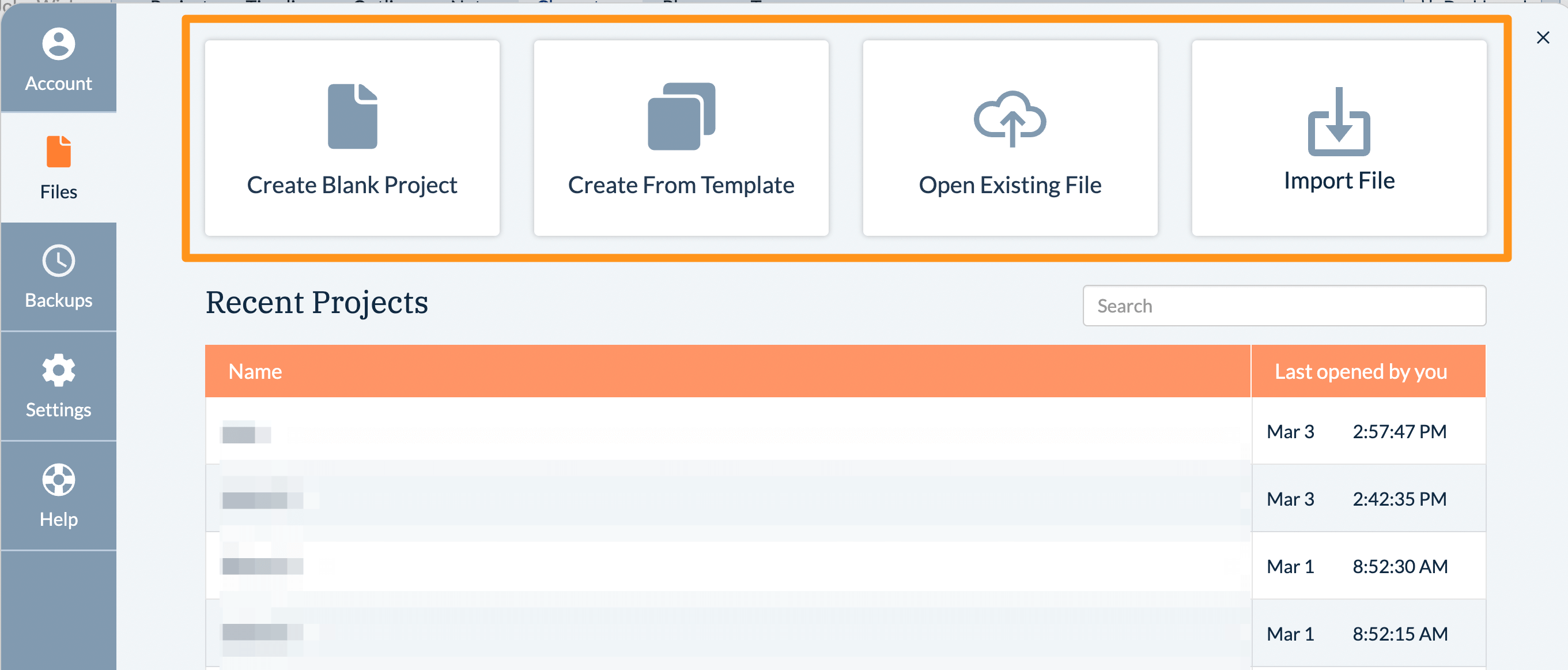
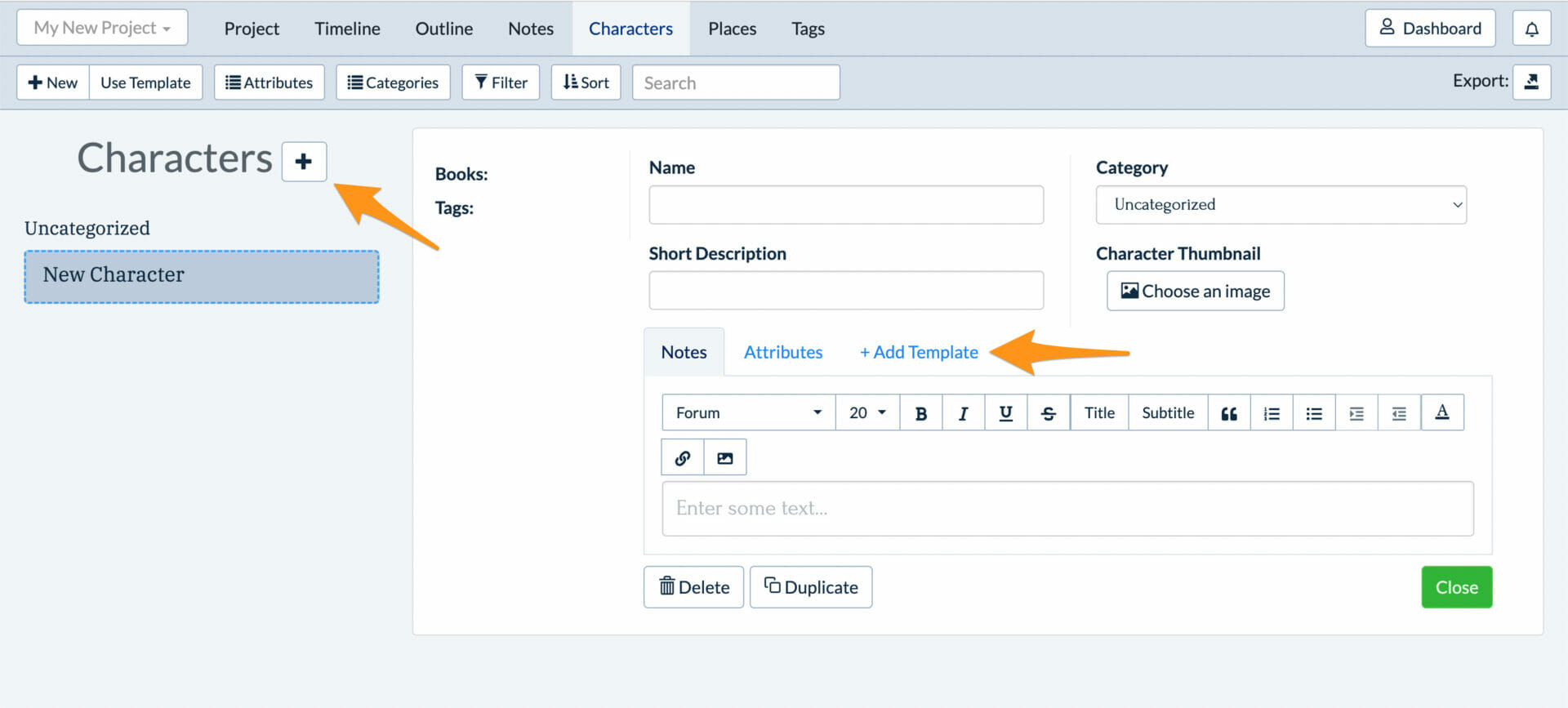
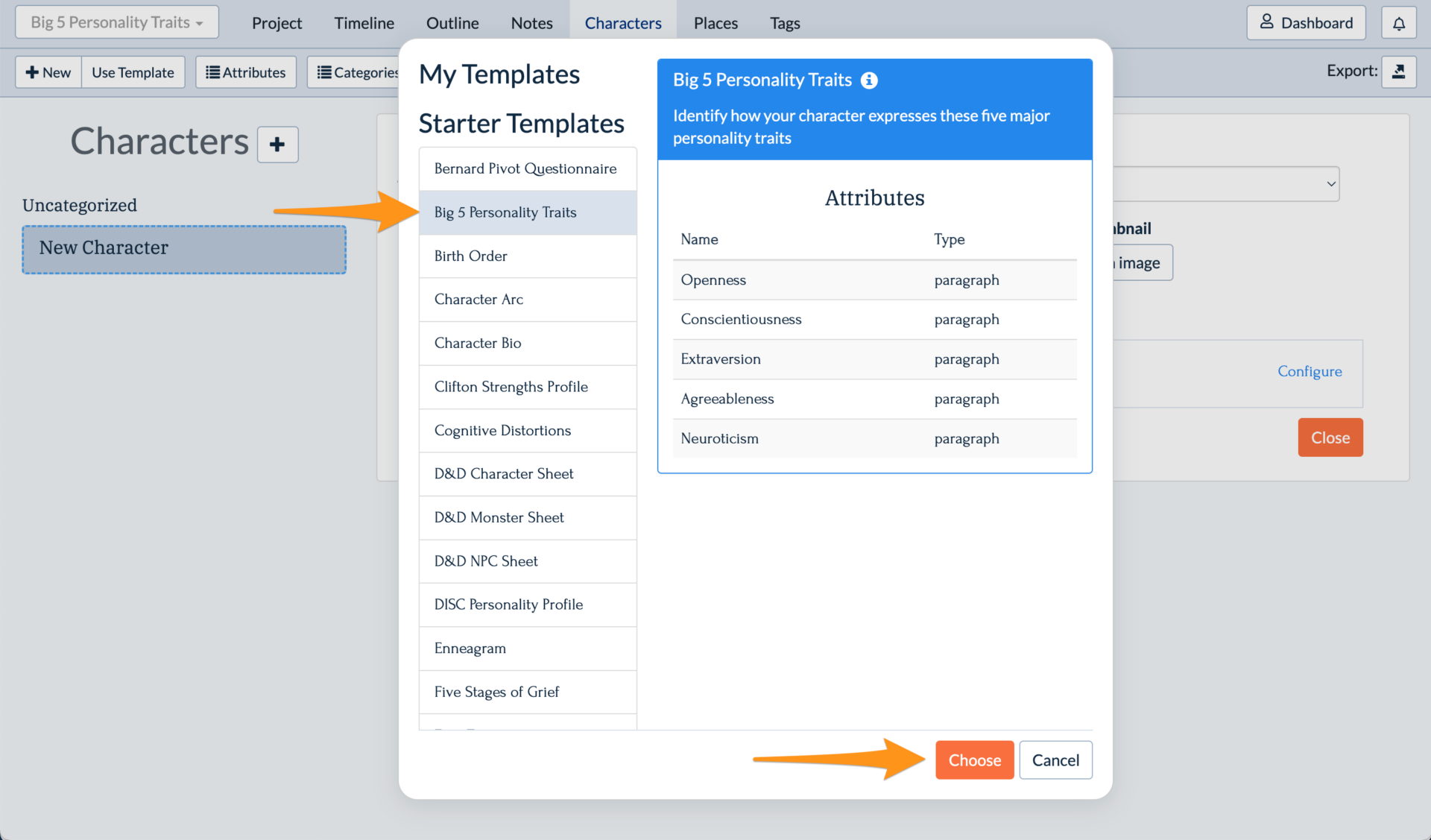
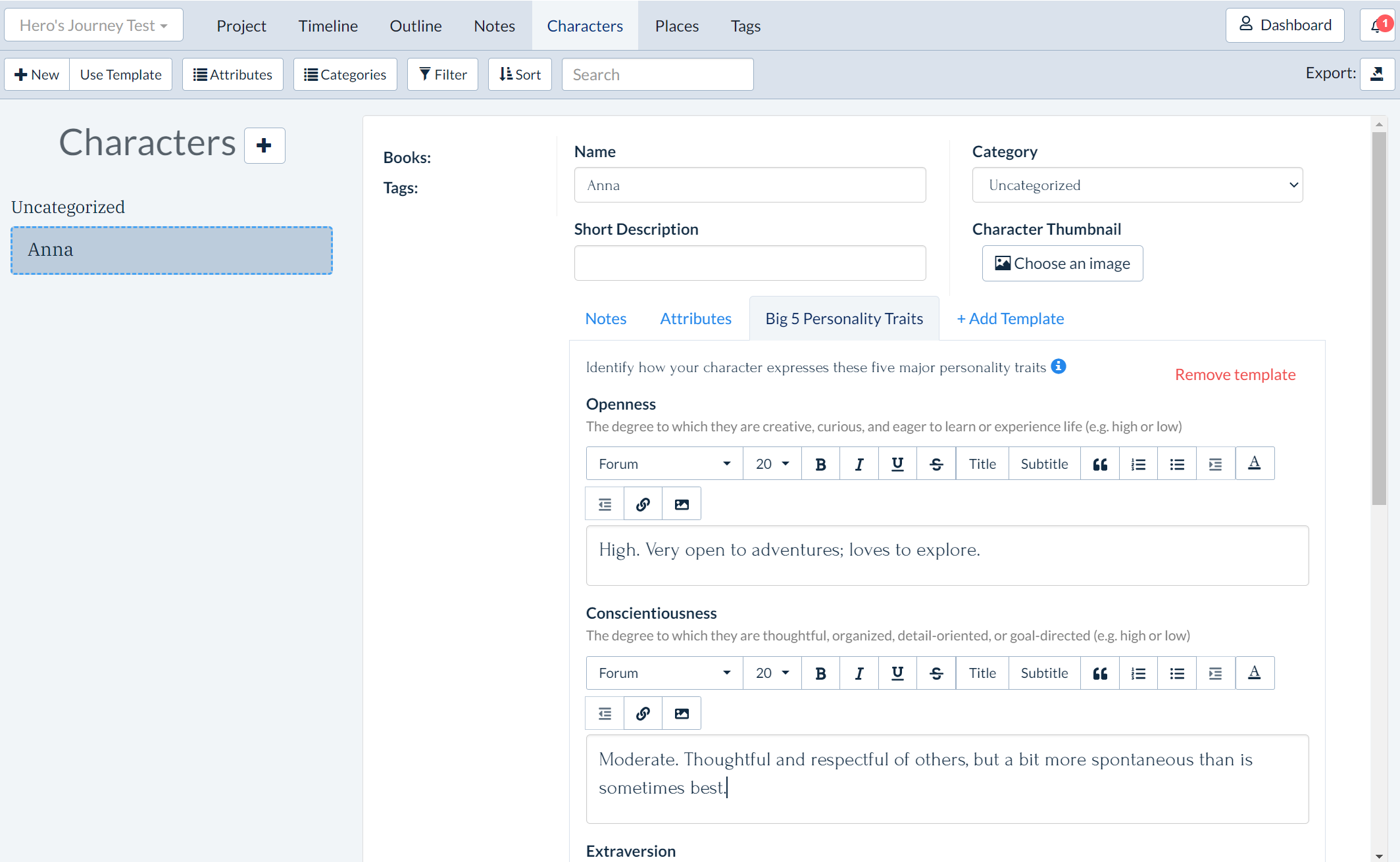
And there you go! You’re all ready to discover what really makes your characters tick.
Ready to jump in? You can use the Big 5 Personality Traits character template as soon as you’re set up with a free trial or Plottr subscription.
Your characters will come to life quickly once you start brainstorming, for example, how their neuroticism (and other traits) will shine during the most important scenes of your novel.
Looking to add even more depth? The Big 5 template will also pair well with these character templates in Plottr:
Happy writing! As you tinker around with this and other templates in Plottr, we’d love to hear from you. Just drop your thoughts in the comments below or join our Facebook group to start a conversation!
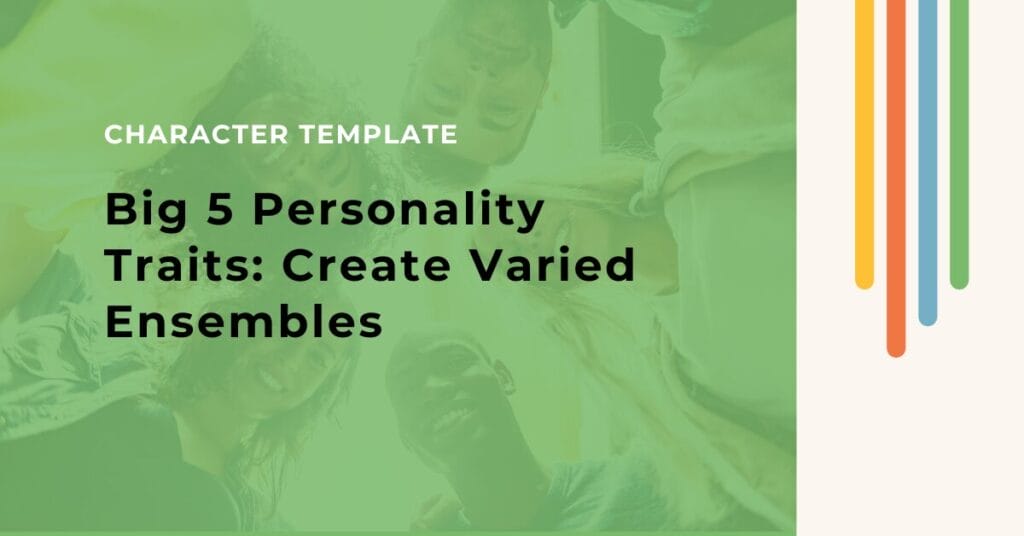

© Fictional Devices, 2024. All Rights Reserved.
Comments